If you’re searching for approachable, popular dance styles you can start right away, our Durham dance studio has you covered. Below we explore five favorite dance forms our students love, including the lively Latin dance styles of Salsa and Merengue, the timeless ballroom dances of the Tango and the Waltz, and the disco-era crowd-pleaser from the swing dance family, the Hustle.
Each dance style has unique characteristics that when performed build rhythm, musicality, and technique while keeping the focus on fun, energetic floor work you can build on.
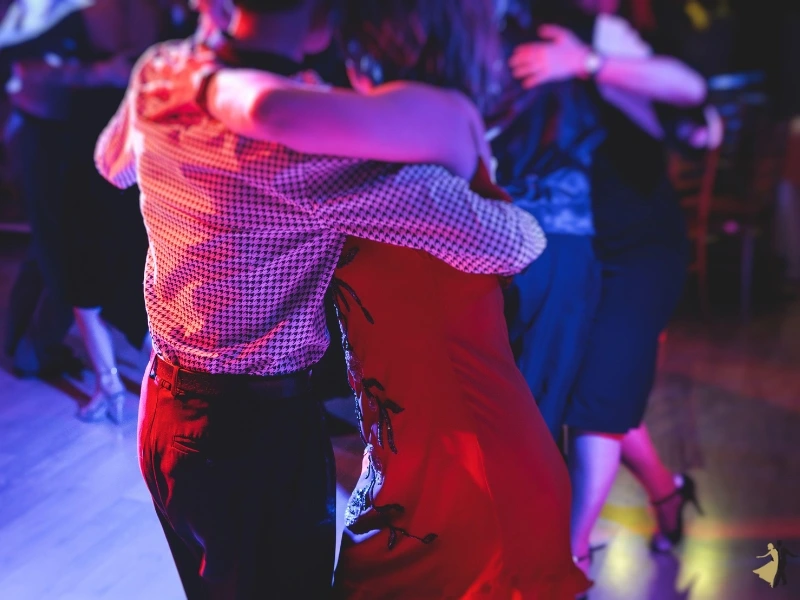
1. Salsa Dance
Salsa dance is a international Latin partner dance that blends Afro-Caribbean rhythms with North and South American influences. Originating in mid-20th-century New York and the Caribbean, Salsa is danced to lively, percussion-driven music with a quick-quick-slow cadence.
The hallmark of the Salsa dance style includes movements like compact footwork, traveling turns, cross-body leads, and body action driven from the hips and core. In social settings and ballroom dance studios alike, Salsa emphasizes clarity of lead-and-follow, improvisation, and expressive styling that keeps dancers engaged and the floor buzzing.
Why Salsa Hooks So Many Dancers
Clear Timing and Rhythm: The quick-quick-slow structure makes it easy to hear the beat and keep movements clean, even as patterns grow.
Fast Progress for Beginners: Compact steps and repeatable turn patterns deliver quick wins that build momentum and motivation.
Social Versatility: You can use Salsa at studio parties and local socials, so new skills get real-world practice immediately.
Transferable Technique: Core control, proper posture, and connection learned in Salsa carry over to other styles of Latin dance like Samba, Cha Cha, and Bachata, you may try next.
Room For Personality: Arm styling, shines, and playful accents invite individual interpretation without overwhelming newer dancers.
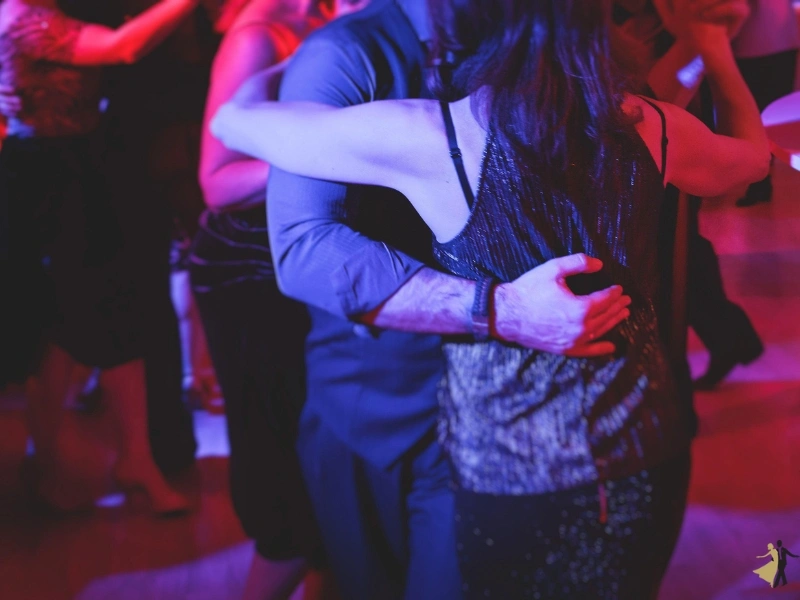
2. The Merengue
Merengue is a Dominican partner dance known for its steady, marching pulse and approachable patterns. Its history is tied to 19th-century Caribbean for social gatherings where everyone—newcomers and seasoned dancers—could join in.
The movement of the Merengue dance style is built on continuous weight changes, gentle hip action, underarm turns, wraps, and hand-to-hand variations. Because the rhythm is so steady, Merengue features relaxed arm tone, and comfortable partner connection before branching into other dance forms.
Why Merengue Feels So Approachable
Simple Musical Structure: The constant beat removes counting stress and lets you focus on technique and connection.
Immediate Confidence: Small, repeatable movements help beginners feel successful within the first lesson or two.
Connection First: Clear lead-and-follow becomes obvious with compact steps, laying a foundation for Salsa, Cha Cha, and beyond.
Encourages Creativity: As balance improves, it’s easy to add turns, wraps, and styling that show personality.
Great For Social Floors: The approachable timing and movements make Merengue a natural fit at studio socials and community events.
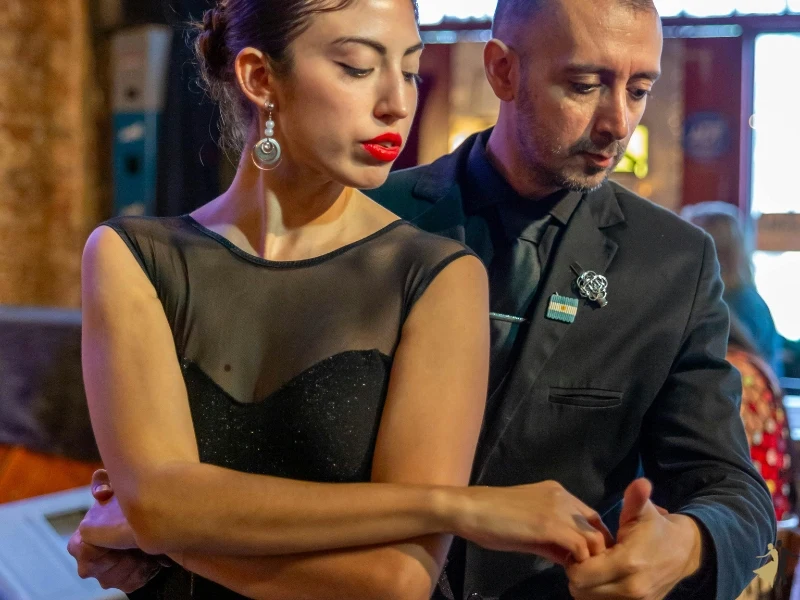
3. The Tango
The Tango is a dramatic and traditional dance popularized in ballrooms around the world with roots in late-19th-century Buenos Aires and Montevideo, later refined for the ballroom. With Spanish dance roots characterized by grounded posture, a closer frame, sharp accents, and poised stillness that punctuates smooth traveling sequences.
This dance style includes strategic walks, corte-like pauses, clean pivots, and precise direction changes. The dance emphasizes intent, connection, and musical phrasing, creating a powerful dialogue between partners and music. Think classical ballet technique and posture without the fragility of being en pointe and still having the space for passion and individual expression.
Why Tango Captivates
Striking Aesthetic: Bold lines, crisp shapes, and controlled stillness give even simple figures a sophisticated look.
Technical Growth: Posture, alignment, leg action, and floor craft improve rapidly under Tango’s precise demands.
Musical Nuance: Accents and pauses train you to shape choreography to the phrasing for artistry, not just steps.
Confidence Under Pressure: Calm, centered movement builds composure that translates to any busy dance floor.
Strong Partner Connection: The close, intentional frame makes lead-and-follow communication feel clear and rewarding.
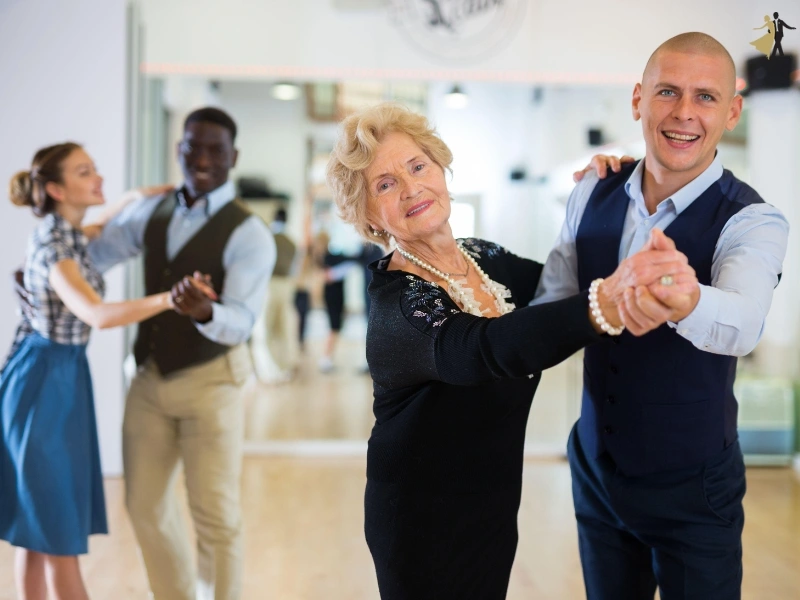
4. The Waltz
The Waltz is the quintessential smooth ballroom style, evolving from 18th- and 19th-century European social dances into today’s elegant showcase, often known for its elaborate costumes and syncopated rhythms. Danced in 3/4 time, Waltz features continuous travel, rise-and-fall, and sweeping rotation.
The essential moves of this dance style includes natural and reverse turns, change steps, and flowing sway that creates the “glide” Waltz is famous for. It’s a superb place to develop posture, balance, and musical phrasing—skills that elevate your overall technique.
Why Waltz Is Timeless
Effortless Flow: Rise-and-fall and soft knees produce the signature glide that feels graceful and looks polished.
Foundational Technique: Waltz strengthens frame, alignment, and controlled rotation that benefit other ballroom styles.
Musical Sensitivity: Counting “1-2-3” instills natural phrasing, keeping turns smooth and the dance comfortably on time.
Comfortable Partnering: A steady frame and gentle lead-and-follow foster harmony during traveling figures.
Floor Confidence: Learning to move purposefully through space improves navigation at socials and showcases.
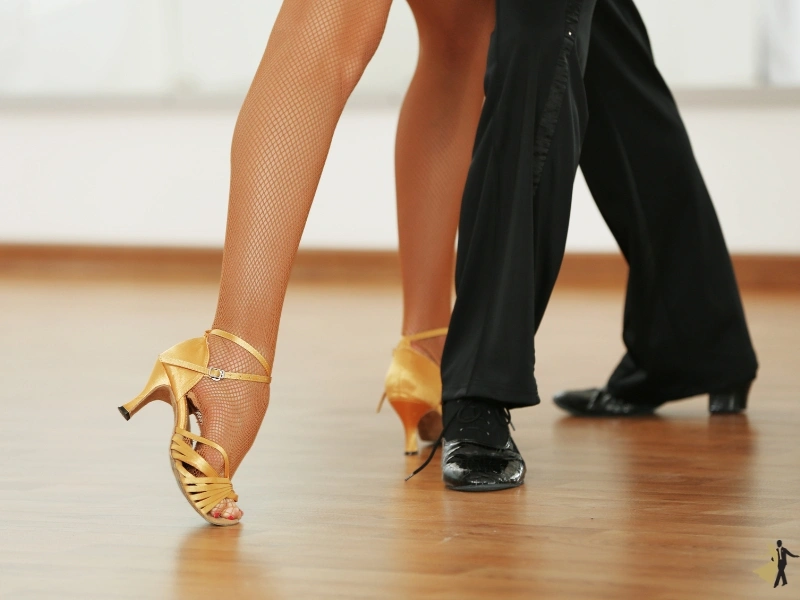
5. The Hustle
The Hustle burst from 1970s disco culture and quickly found a home in partner-dance studios. Today’s modern dance interpretations of the Hustle blends vintage swing dance flair with contemporary dance polish. This style of dance incorporates elements of emotional expression and fluid movements with crisp break steps, traveling turns, and spot spins that suit upbeat funk, pop, or even hip hop music and jazz music.
Primary movements include inside/outside turns, wrap-and-release actions, and rotating figures that read clearly down a shared slot, making it a favorite for crowded social floors.
Why Hustle Is A Crowd-Pleaser
Instant Fun Factor: High-energy music and straightforward basics get you dancing combinations quickly.
Spin Technique Payoff: Focused work on spotting, arm tone, and foot placement makes fast turns clean and controlled.
Social Range: Fits weddings, studio parties, and many club tracks—skills you’ll actually use.
Tidy, Readable Patterns: The slot keeps traffic organized, partner-friendly, and visually sharp at higher tempos.
Confidence Builder: Rapid, visible progress boosts motivation and supports bolder creativity across swing and ballroom.
Learn Popular Dance Styles At Our Durham Dance Studio
If you are ready to step onto the floor, the experienced dance instructors at Fred Astaire Dance Studio of Durham teach all levels of dance—from beginners to students who have danced for years—through private lessons and group classes that meet you where you are.
Contact us today to ask about our new-student special and discover how much fun dancing can be. Call 919-489-4313, fill out our online contact form, or visit our studio on Garrett Road to get started.

